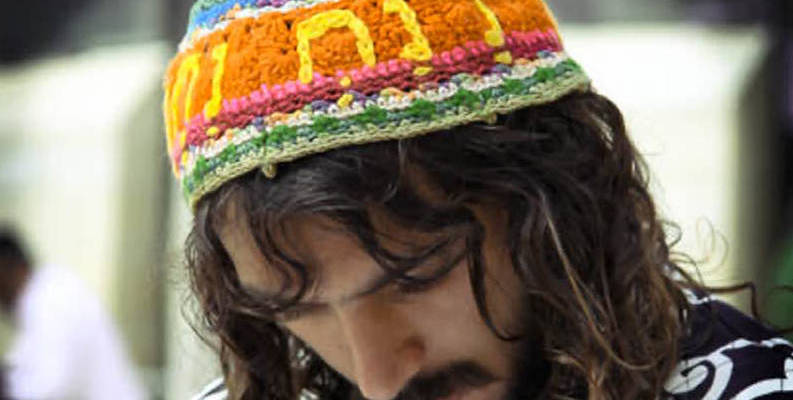“Through my pictures, I show that Israel has deserts and cities, people from all over the world, and ancient and modern history,” said photographer Jodi Sugar.
By Tsivya Fox-Dobuler
The Talmudic sages taught, “Ten measures of beauty descended to the world; Jerusalem took nine and the rest of the world took one.”
The work of Israeli photographers testifies to the truth of this adage. With a click of a camera, each one focuses on a different aspect of Israel’s beauty, inspiring love for the Land of Israel and its people.
Passionate About Nature
Jodi Sugar immigrated to Israel twice, first as a single in 1992 and a second time in 2011 with her family. She has lived in the northern city of Tzfat for the past nine years and is passionate about photographing Israel’s vistas, flowers, and alleyways.
Sugar travels extensively throughout the country finding beauty wherever she goes.
“Through my pictures, I try to share that Israel is so much more than kibbutzim and camels. We have deserts and cities, people from all over the world, and ancient and modern history,” she told United with Israel (UWI).
Describing the area between Tzfat and Rosh Pina, Sugar commented, “This area is so pristine and feels untouched by man. Cows graze in the wadi and the olive groves have an eternal feel. Sometimes I imagine that the tribes of Israel from thousands of years ago walked on this very same path.”
Besides photographing nature, Sugar enjoys capturing Israel’s ancient sites in places like Jerusalem’s Old City, where she lived when she first immigrated to Israel.
“I felt that I was in God’s backyard,” she said. “People would be so emotional after visiting the Kotel (Western Wall) that they often wanted to bring home one of my photos of the Old City to remind them of that feeling.”
Sugar’s most popular picture to date is of an ultra-Orthodox Jewish man standing next to an Israeli soldier. “Everyone loves that picture,” she said. “It shows our unity. Each one of us is a soldier of God in our own way. One prays, one fights. Each helps protect the country in his own way.”
She noted, “God gave this land to the Jewish people. When I photograph a sunset here it has so much more meaning than a sunset any other place in the world. I hope that message comes across in my pictures.”
Correcting Misconceptions about Israel
Yosef Symonds moved to Israel from Australia in 1981. Over the past 15 years, he has professionally photographed the land and people of Israel. His favorite subjects are nature, landscapes, street photography, and the Temple Mount in Jerusalem. His pictures are featured in various publications and can be viewed on his website, “Visions of Israel.”
“There is a hill near my home that fills with magnificent wildflowers for a short time each year,” Symonds told UWI. “Though I’ve seen these flowers before, I return each year to photograph and capture them again and different aspects of their beauty.”
He regularly ascends the Temple Mount attempting to fight misconceptions about the site. Through his photography, he tries to both document the holy place as well as capture the mood, emotions, and concentration of the people visiting.
“I photograph entering the Temple Mount, on the Mount, and when leaving,” Symonds said. “It’s important for people to see the entire process and the challenges the Jews face when visiting their holiest place.”
He hopes that his photos of Israel will bring “a positive light for people worldwide who don’t have the opportunity to see beyond the negative headlines.”
Recently, an exhibition was held of Symonds’ pictures that documented the historic timeline of the modern development of Ramat Beit Shemesh, located between Jerusalem and Tel Aviv.
“I have lived in this neighborhood over 20 years,” he told UWI. “I have seen the area just across the street change from its original natural setting through various stages of development until today, where it is full of homes and apartments.”
Reflecting on his city’s growth, he said, “Personally, I enjoy the more pristine views. But the development shows that the ingathering of the Jewish exiles as foretold in the Bible is happening and we need accommodations for that. That’s a historic process that is fascinating to see.”
Capturing Connections at the Kotel
Moshe Schlass moved to Jerusalem’s Old City from America in 1978. Six days a week, after he prays at the Kotel, he takes candid portraits of the myriad of visitors who come to this holy site.
“Twelve years ago, a friend asked me if I take pictures of people visiting the Kotel, the most visited site in the entire world that has meaning,” he told UWI. “I said, ‘I don’t even own a camera!'”
That friend bought Schlass a digital camera and iPhone with one request; that he check back with him in a year and share how he was using the new equipment. “The last thing on my mind at that time was to become a photographer,” he said.
Schlass, who attended the School of Visual Arts in New York City in his youth, has since embarked on a project to photograph worshipers at the Kotel of all ages, backgrounds, and faiths. He tries to capture them in a moment of inspiration. His favorite subjects are children, who, he said, are always spontaneous and never self-conscience.
“When a person comes to the Kotel, their soul understands that it is much more than a tourist site,” Schlass told UWI. “They feel an intimate connection to God. They feel this is a physical place from which they can reach an infinite being. That unique feeling is what I try to capture in my pictures.”
“I post my photos on my Facebook page as a way to reach out to people and get them interested in God and Judaism,” he said. “I also have a website named ‘Intimate With the Infinite.’ I called it that because I want to bring people closer to the people who are close to God, those praying at the Kotel.”
When asked if people ever complain about having their picture taken, Schlass said it only happened a couple of times. “When I explain that a Jew somewhere around the world might connect to Israel or Judaism just from seeing that picture, they usually say, ‘Well, in that case, it’s OK.'”
“I once saw a classic Popeye looking guy,” he said. “He had big forearms, tattoos, and walked bowlegged. I watched him walk towards the Kotel and start sobbing.
“I struck up a conversation with him. He said, ‘You probably don’t think I’m Jewish but I am. I’m in the merchant marines and my boat got docked in Haifa. They said I could go to Tel Aviv, Eilat, or Jerusalem to put a prayer in the Wall. Coming here, I felt my grandmother’s presence and remembered going to her home for Shabbat and eating her delicious food.’ He asked me if I could explain what is special about this place.”
Schlass responded, “This wall is made up of all the prayers of those who have called out to God to protect, heal or help someone they love. You must have touched your grandmother’s prayers in this wall.”
Schlass’ photograph of this man leaning on Jerusalem’s most ancient stones sends a powerful message: Israel is a special and welcoming place for all.

HELP ISRAELIS BATTLE CORONA!
Donate to the Corona Emergency Relief Fund. Coronavirus has taken a huge toll on the people of Israel. The poor, elderly and ill are most vulnerable.
Israeli soldiers, security officers and medical care providers operate under great danger and risk to life.
Over 1 million Israelis are out of work. Many cannot make ends meet. We provide financial aid, food, medical supplies and more. Funds are distributed where needed most. The time to act is now!
United with Israel extends a special note of appreciation to the Genesis Prize for their generous support.
Do You Love Israel? Make a Donation - Show Your Support!
Donate to vital charities that help protect Israeli citizens and inspire millions around the world to support Israel too!
Now more than ever, Israel needs your help to fight and win the war -- including on the battlefield of public opinion.
Antisemitism, anti-Israel bias and boycotts are out of control. Israel's enemies are inciting terror and violence against innocent Israelis and Jews around the world. Help us fight back!




